How Sales Enablement Helps SMBs
Your SMB has been succeeding with marketing automation. You have more leads and better user data than ever before, and your intelligent, responsive marketing campaigns are practically running themselves. But what do you do once those leads are hot?
When it comes to selling as an SMB, you only have two options: You either pick and sell manually, fumbling and losing an average 40% of prospects, or you follow the best practices for sales enablement, automatically giving reps everything they need to stride into the sales end zone, closing bigger deals more often.
Everything You Need to Close a Deal
What is sales enablement? Sales enablement is a team sport. It’s everything that happens after marketing and before support, but it has to be aligned with marketing to achieve real results.
Demand Metric has been a leader in research on best practices for sales enablement. Their extensive definition of sales enablement is worth noting:
Sales Enablement is the processes, practices, technologies and tools that improve the performance and productivity of the sales organization. Sales Enablement enhances the ability of the sales team to increase company revenue through sales. Sales Enablement drives revenue by directly impacting the sales teams’ ability to close more deals.
In other words, sales enablement is a function within an organization. When implemented correctly, sales enablement gives your sales team everything they need to close a deal.
It really is that simple. I’m not saying that implementing sales enablement is easy to do — things worth doing seldom are — but the tools and technologies necessary for sales and marketing automation that supports sales enablement are now available to SMBs. If you focus on the practice of using those tools to make your sales team’s lives easier, you will succeed with sales enablement. But if your sales enablement strategy doesn’t align with your organization’s sales and marketing goals, then the project will be pointless.
Sales, Meet Marketing
There’s a lot of fluff out there from analysts who think that sales enablement is only the purview of sales, marketing, or even just the product department. Don’t believe them. They’re just as confused as their message. In fact, when sales enablement is implemented by the sales department with feedback and collaboration from other key teams at an organization, it leads to full-cycle customer engagement.
Demand Metric’s sales enablement research has found that the 75% of companies that get good results from sales enablement are the same 75% of companies that have aligned sales and marketing for holistic reporting and shared KPIs. Demand’s report on Best Practices for Sales Enablement clearly demonstrates that successful sales enablement is based around sales and marketing alignment in terms of process, content and operations. In other words, it’s about what you’re selling, how you describe it, and how you get that message to your customers.
For the highest ROI, that process must include sales materials, sales intelligence and sales automation. If one of those elements is missing, you’re only hurting your own chances of winning at the sales game. On the other hand, if all three work together, then you’re one step closer to a winning season.
Sales Materials
“Sales enablement” used to refer only to getting sales professionals the documents they needed to close deals, such as email content, demo materials and personalized contracts. While sales enablement is now a much more comprehensive function, that original aspect is still essential. Not only is it still essential, but it’s gotten even better by including advanced automation. Sales teams still need the right sales materials to close deals, and automating as much as possible about the creation and distribution of those materials is a core part of new sales enablement technology.
The first step in automating sales materials is to reduce the time needed to actually create those documents, and to automatically include up-to-date stats in those materials. Products like WebMerge let you auto-populate sales documents, including quotes, proposals, invoices and contracts. In addition you can use merge fields to auto-populate and personalize communications from your CRM platform, such as emails offering a personalized demo to a hot lead.
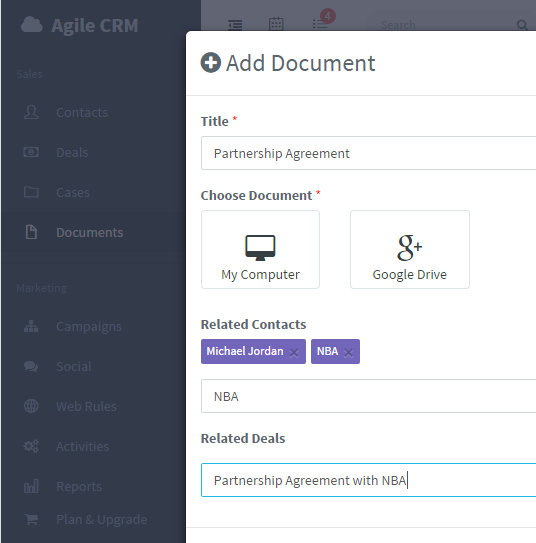
The next step is to automate what happens with those documents — how they’re stored, retrieved, delivered and improved. Add documents to different deal milestones so your sales people will already have them when their prospect reaches that milestone or a lead is passed to them from someone handling an earlier sales stage. Core functions like attaching documents to contacts, companies, deals and emails can keep your sales team on track. Why waste time searching for the right document? Let sales enablement do that for you.
Sales Intelligence
Customers now do 50-60% of their research before speaking with a sales rep. Sales intelligence is no longer just about the final sales numbers, it’s also about customer behavior. Complete sales enablement must include sales intelligence based on contact-level analytics. At its most comprehensive, that data includes both where customers are coming from and where they want to go.
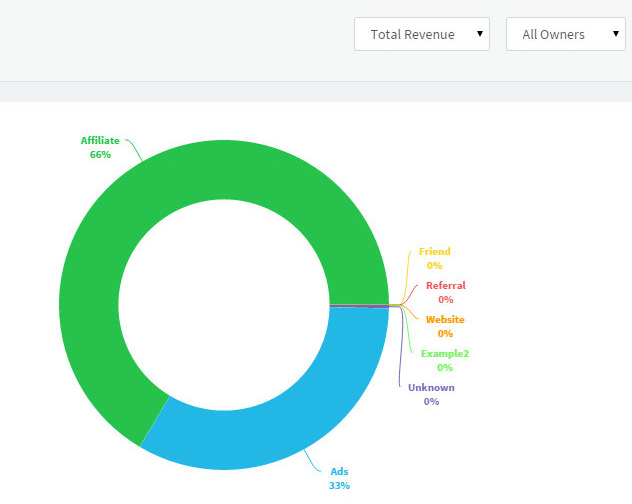
Sales intelligence enables smarter selling by tracking every customer throughout their lifecycle. Companies that understand this use a combination of customer-level analytics and big data to track customer interests and behavior. This leads to complete customer histories, which are essential for building trust and closing more deals.
When you understand customer behavior, you can sell to their specific needs and strengths at the moment they reach a high lead score. Even if a lead has passed between different reps, customer timelines show complete customer histories.
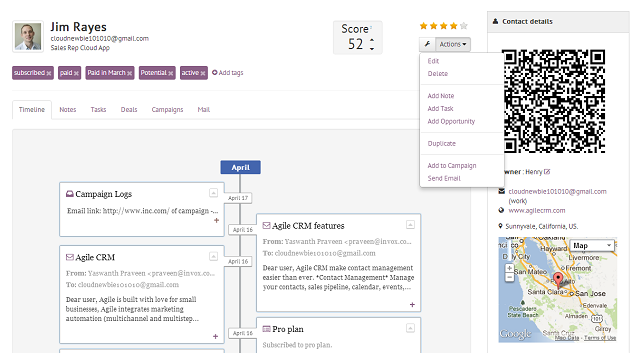
Sales Automation
The term sales automation can be a bit confusing because it basically refers to the ways that sales teams use marketing automation technology to qualify, nurture, engage and up-sell leads automatically. But what’s important isn’t the terms themselves, but how you use the technology to give salespeople — and potential customers — exactly what they need at just the right moment.
As Forrester Research’s Scott Santucci has written, “sales enablement bridges go-to-market strategy and execution.” Santucci urges sales teams to understand that sales processes are a lot more like a sport than an assembly line. Practices like gamification and sales pipeline automation help sales teams make use of sales intelligence in a way that’s both competitive and collaborative. All of these practices combine to enable smarter selling, especially for SMBs where team members are often juggling many roles and projects at once.
As the cornerstone of sales enablement, sales automation helps salespeople in three specific ways:
Automated Engagement
Having tracked prospect behavior to see where they hang out, which particular parts of your business hold their interest, and how they like to communicate with your company, effective sales enablement means continuing the conversation on those channels, based around those interests. You can do this with separate platforms for telephony, social selling, email marketing automation, etc. However, an all-in-one solution like Agile CRM is much more cost-effective.
Real-time Alerts
Real-time alerts and notifications are a core part of sales enablement technology. Custom alerts can let your sales team know when a lead is buy-ready based on when they reach a certain lead score or when they click a specific link or open an email. Reach out and communicate with your leads at just the right moment.
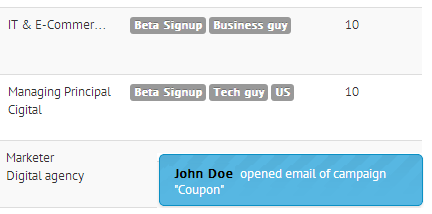
Repeatable Pipelines
Sales enablement is a team sport and sales automation software provides a whole team of coaches to help you exceed at each stage in the sales pipeline. Create repeatable pipelines with automated campaigns around each deal milestone and prospects and customers alike will remain engaged. You can constantly improve the content and messaging around each pipeline based on customer behavior and reaction to those materials, doubling down on your sales enablement.
A final word of caution: sales enablement helps to automate the sales process, but it requires planning. Before implementing a sales strategy that includes sales enablement, read through that Demand Metric report on Best Practices and take the time to decide which sales software is right for your business. Don’t just think about what you need now, think about how you want your business to grow in the future.
Envision your sales goals as a future picture of success. Then use sales enablement to connect the dots.
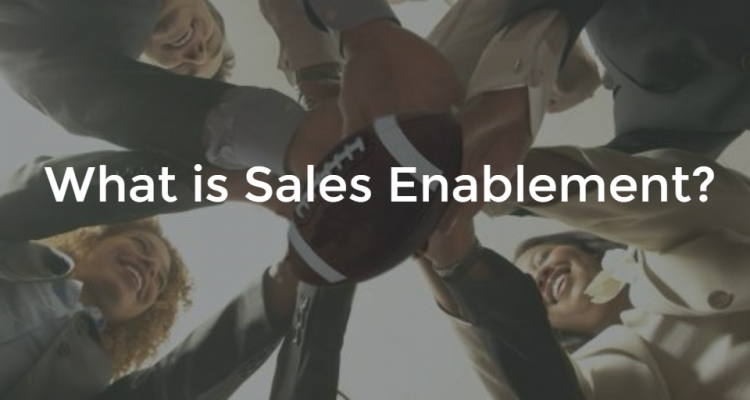
No Comments